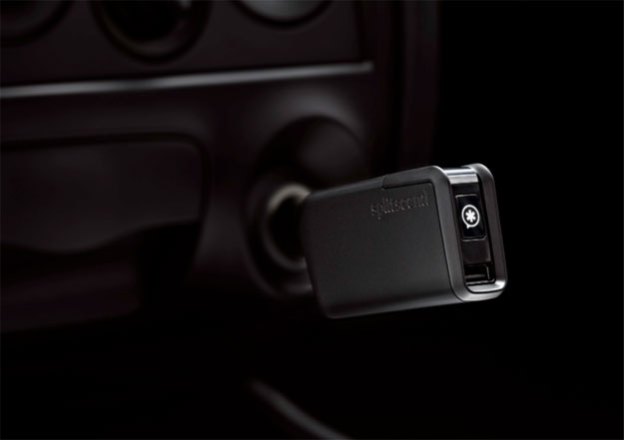
Safety tech is something we can all appreciate. In the moments after a collision, drivers aren’t always in the most emotionally stable state of mind – assuming they’re conscious at all. That is exactly why services like GM’s OnStar have proven so popular over the years. With its automated collision detection, it can detect when your car has been in an accident, be it through airbag deployment or onboard sensors, and notify emergency services without any driver input whatsoever.
Sadly, these services and features are not available from all brands. OnStar is restricted to GM’s family of vehicles, and if you’re driving an older set of wheels you’re out of luck, too. And then there is the associated cost: OnStar’s base service, for example, will run $20 a month. Some packages can cost even more.
Enter Splitsecnd, a portable crash detection device that can be used in any vehicle with a 12 volt socket, regardless of make or model. Simply plug it in and go. In the event of a collision, Splitsecnd will automatically dial for help. The device costs $199 with an additional subscription fee of $14.99 per month.

But how does it work? It’s fairly straightforward, actually. Splitsecnd uses a built-in accelerometer for collision detection integrated with a built-in 3G cellular signal for communication. Once a collision is detected – or the emergency call button is pressed on the device – a call is placed to a 24/7 call center located in New Hampshire. From there, the call center can help contact pre-designated personal emergency contacts as well as provide the appropriate emergency response. If, however, no response is given from the driver, the call center will automatically dispatch EMS crews to the vehicle’s location.
As Splitsecnd co-founder Christ Thompson puts it, “Crash detection technology has been available in select new vehicles for almost two decades, but there has been very little innovation in terms of making this technology ubiquitous and less complicated. We built Splitsecnd because everyone should be able to easily protect themselves and their family on the road, no matter the make, model, or year of their car.”
In the event the vehicle loses power, Splitsecnd is armed with a built-in battery that will take over for about an hour. Additionally, the unit itself features a USB charging port, handy for charging your phone.
It is the Splitsecnd’s ease of use and peace of mind that will likely appeal to buyers. Vehicles are big ticket items, and partaking in manufacturers’ current onboard safety tech can come with a steep price tag. Splitsecnd aims to shut the door on that financial burden with a simple, user-intuitive device that is slightly more cost effective. Of course, it’s important to point out that Splitsecnd’s services are primarily for automatic crash response, whereas services like OnStar and Hyundai BlueLink provide hands-free calling, turn-by-turn navigation, vehicle diagnostics, and many others.

In addition to automated emergency contact services, Splitsecnd also features a built-in vehicle locator that integrates with a free Android and iOS app. (Splitsecnd’s creators also tell us that a Windows Phone version is in the works as well). With the app, drivers can monitor where their car is at all times from the comfort of their phone or computer. So while the kids will surely put up a fight, it’s a great way to make sure the little punks are where they say they are – individual rights to privacy be damned.
It might be a little bare-bones when it comes to features, but for people looking to keep themselves and their family safe on a budget (with it a little bit of James Bond-styled spying thrown in for good measure) it might be hard to pass up this nifty little life-saving device when it goes on sale this spring.
Editors' Recommendations
- Is your check engine light on? Here are 10 possible reasons why
- How to fix a flat tire on your car
- How to rotate your tires, and why it’s important


